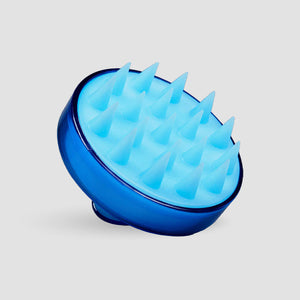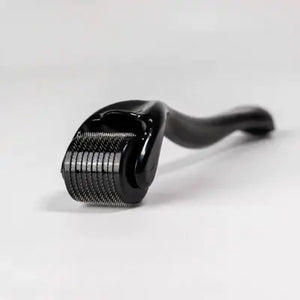
Hair loss after flu - when fever damages hair
If your hair suddenly falls out in clumps and you have no explanation, there could be several causes. Infections with high fever can lead to sudden hair loss. Therefore, hair loss after the flu is also possible. But when does hair loss occur, and how can it be treated?
Table of contents
- Can hair loss occur after the flu?
- How can flu cause such a problem?
- How do the symptoms manifest themselves?
- Does hair always fall out after the flu?
- How long can hair loss last?
- How can the problem be treated?
- Hair transplantation as the optimal solution for severe hair loss
- Conclusion: Hair loss can occur after flu
Can hair loss occur after the flu?

If you're wondering why you're suddenly losing a lot of hair for no apparent reason, you should consult a dermatologist. They'll examine your scalp and hair and take a medical history. They'll ask you about:
- Lifestyle and eating habits
- known diseases such as diabetes mellitus or thyroid diseases
- Taking medication
- stress
- Depression
This will give the dermatologist clues as to the possible causes of hair loss. If hair loss occurs evenly across the entire head, an infectious disease may be a possibility. The dermatologist will ask you about any recent infections with fever. A severe infection with a high fever is the flu (influenza), which can lead to hair loss.
How can flu cause such a problem?
Viral influenza is an acute respiratory illness that can be life-threatening. It is caused by viruses and is not comparable to the common cold, which is caused by other pathogens. Flu viruses are constantly mutating and developing new variants. A typical symptom is a high fever, which can reach 40 degrees Celsius. High fever and infections can lead to changes in the body. In some patients, such changes also affect the hair and its growth cycle. The growth phase is shortened. The hair enters the telogen phase (resting phase) prematurely and falls out.
How do the symptoms manifest themselves?

Hair loss after the flu manifests itself as diffuse hair loss. Hair falls out evenly all over the head. Patients do not lose their hair immediately during or after the flu. The problem is also known as telogen effluvium. Due to the fever, the hair growth phase (anagen phase) is shortened. Numerous hair follicles enter the resting phase at the same time. As a result, many hairs fall out at once. Hair thins all over the head. The scalp may become visible. After the feverish infection, it can take two to three months for your hair to fall out. After the end of the growth phase, there is a transition phase that lasts two to three weeks. Only then does the resting phase begin, during which the hair falls out.
Does hair always fall out after the flu?
The answer to this question is a resounding no. Influenza can vary in severity. While some patients experience minimal symptoms, others experience severe symptoms with high fever. Secondary effects, such as hearing loss, can occur. In extremely severe cases, the flu can even be fatal. Whether hair loss occurs after the flu, and how severe it is, depends on the severity of the fever and how long it lasted.
How long can hair loss last?
Diffuse hair loss usually ends once the cause is eliminated. During the resting phase, hair falls out. The hair follicles are still intact and regenerate to produce new hair. When your hair falls out, the regrowing hair is already "in the starting blocks," so to speak. The cycle, with its growth phase, transition phase, and resting phase, begins again. The resting phase lasts three to four months. Therefore, if you experience hair loss after the flu, it can take three to four months for the hair to grow back. Since hair grows about 1.25 centimeters per month, you may have to wait up to a year for the regrowing hair to reach an acceptable length.
How can the problem be treated?

Since diffuse hair loss usually regrows on its own once the underlying cause is no longer present, treatment for hair loss after the flu is not necessary. However, there are several ways to bridge the time until hair regrowth or to stimulate hair growth:
Hair pigmentation
With this method, pigments matching your hair color are inserted into the scalp. They look like regrowing stubble. If you shave your head or wear your hair very short, the pigments will look like shaved or very short hair. This method can also make your hair appear fuller.
PRP treatment
Your own blood, which has been taken from you, is centrifuged to obtain platelet-rich plasma and injected into your scalp. This nutrient-rich plasma stimulates hair growth.
Mesohair therapy
In this treatment, a cocktail of active ingredients tailored to your hair type is injected into your scalp. This stimulates the hair follicles to produce new hair.
Microneedling
A dermaroller creates tiny injuries in the scalp. Platelets, which stimulate hair growth with their growth factors and nutrients, are involved in the healing process.
Hair transplantation as the optimal solution for severe hair loss
An optimal solution for severe hair loss is a hair transplant. This is the most effective method when hair loss was severe following a bout of flu and the hair doesn't grow back or grows back very sparsely. Hair is removed from areas where sufficient donor material is still available. This hair is implanted into prepared channels. Initially, the transplanted hair falls out while the hair follicles recover. After three to six months, the hair grows back. The final result is visible after 12 to 18 months.
Conclusion: Hair loss can occur after flu
Hair loss after the flu is possible if the hair enters the resting phase prematurely due to the high fever. You may lose a lot of hair about two to three months after the illness. Because the hair enters the resting phase at the same time, hair loss occurs evenly across the entire head. In most cases, this condition is only temporary and does not require treatment. About three to four months after the loss, the hair grows back. Hair growth can be stimulated with a PRP treatment , microneedling, or Mesohair therapy . If the hair does not grow back, a hair transplant is the optimal and permanent solution to successfully counteract the problem.




















